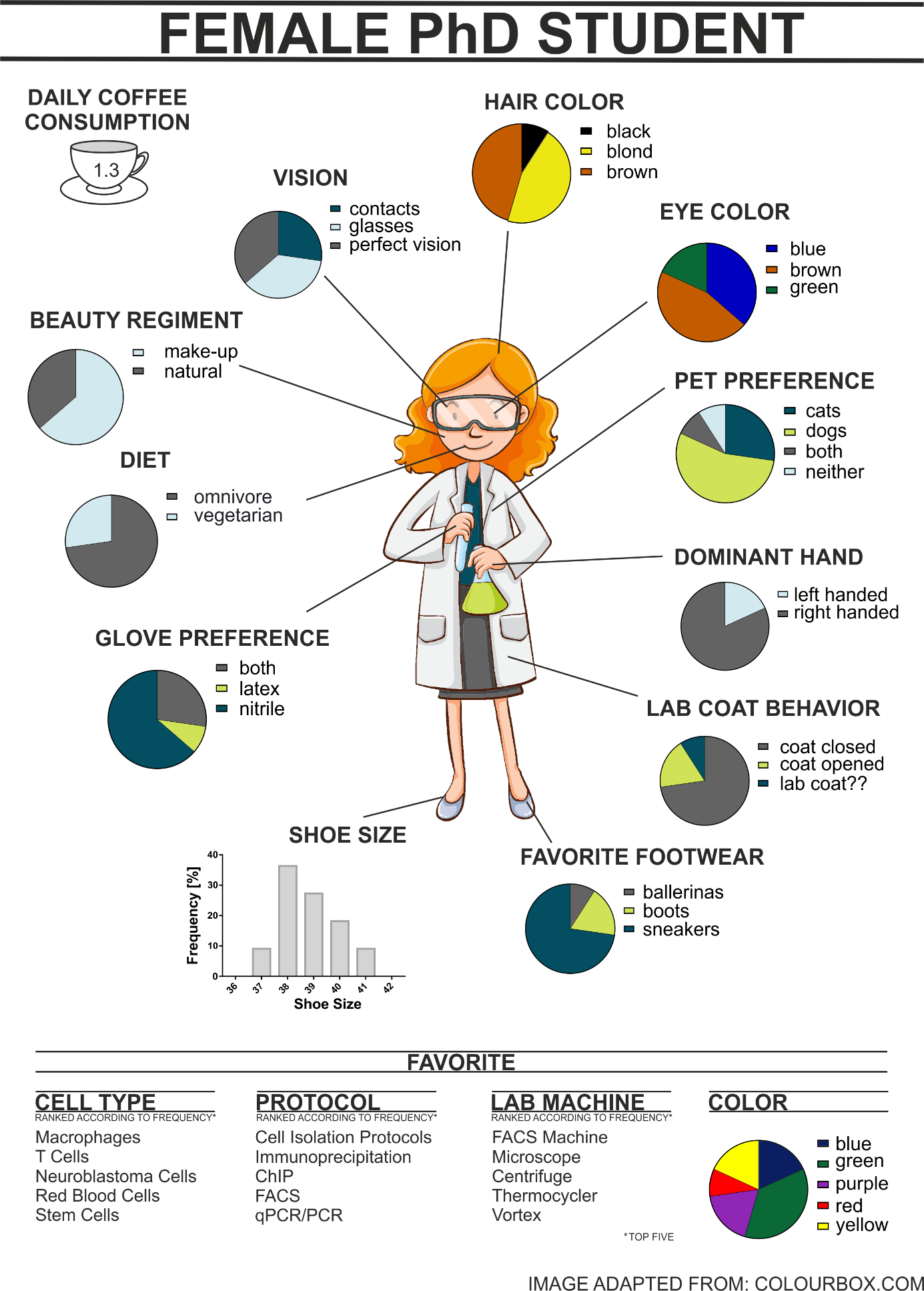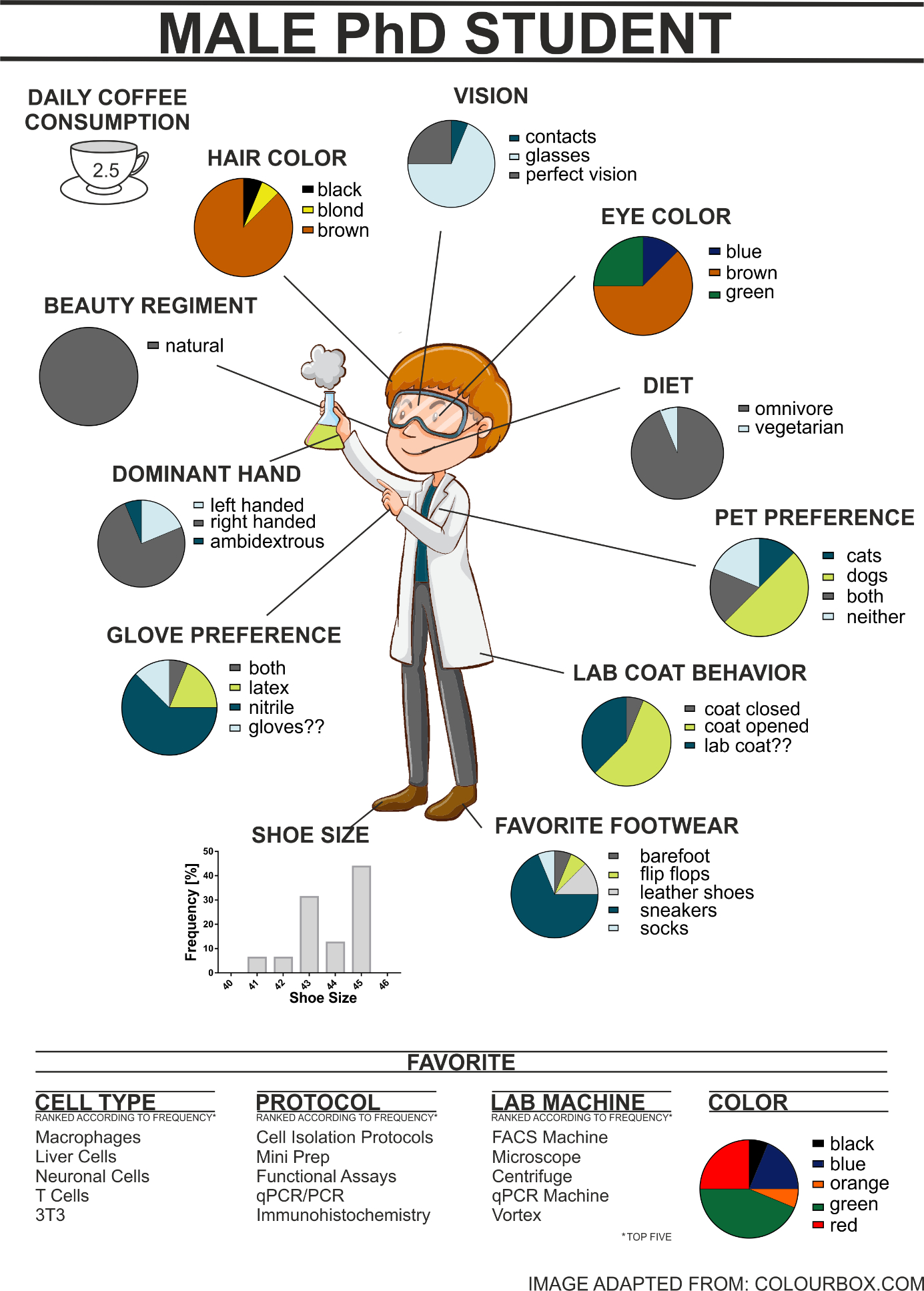
(image adapted from colourbox.com)
Have you ever doubted your decision to pursue a PhD? We’ve found that most PhD students we’ve talked to, at one point or another, experience uncertainty of some kind. Have you ever doubted whether you correspond to what a “typical PhD student” is supposed be? Because we know that life as a graduate student can at times be chaotic and taxing, we’ve set out to alleviate that particular stressor and to reassure you that you, too, are (most probably) a typical PhD student.
Thus, we started our quest to characterize your average PhD student by interviewing 30 of our fellow students and asking questions about titillating subjects such as shoe size and eye color in order to discover the characteristics that define the phenotype of a typical PhD student. We wanted to know if all PhD students share a common hatred for cats or are perhaps united by a love for western blotting. We asked questions both relevant to and completely unrelated to our daily lives in the lab to get a good all-around picture of a PhD student. Can we utilize our thus discovered preferences and behaviors to define selection criteria for becoming (successful) PhD students or are we simply a humongously heterogeneous group, randomly sampled from the human population?

Indeed, we found some major commonalities. For instance, not a single male PhD student uses make-up. And most of us PhD students like to wear sneakers. But does this really differentiate us from the rest of the human population?
Interestingly, we could tell the male and female PhD students apart by their shoe size. Another good indicator to tell male and female students apart were safety concerns. While most men either wear their lab coats open or don’t even know that such things exist (except that one time a year when the safety inspector comes around*), women tend to wear their lab coats securely buttoned up. Other than that, men and women don’t seem to be all that different. For instance, we seem to be mostly right handed, often need either glasses or contact lenses, and predominantly seem to enjoy the company of dogs rather than cats.
When we asked our fellow PhD students about their favorite protocols and cells, we found rather quickly that they seem to enjoy a love-hate relationship with the cells they are working with. Despite moaning about the cells, they all, without fail, picked them as their favorite cell type as well. On the other hand, not a single interviewed student seemed to actually have a favorite protocol. Even though (after we insisted on getting our answer) they all managed to come up with their favorite protocol, most PhD students would have preferred to tell us all about the protocols they still have nightmares about, that never work out and rob them of the last remainders of their sanity. But, since we still have a little faith in humanity, we decided not to focus on the frustration that we all sometimes have to deal with and therefore decided not to include that particular question in our survey.
So, in conclusion, there is no reason to doubt that you, too, belong to the group. We can say that you are a typical PhD student if you are either male or female, between 20 and 40 years old, wear glasses, contact lenses or have perfect vision, eat meat or don’t, like cats, dogs, both or neither. This, by the way, seems to also apply to, well, everyone else on the planet born between 1977 and 1997. As for the duration that you get to gleefully call yourself a ‘PhD student’ – it seems that this glory is yours for somewhere between three and five years. So enjoy it while it lasts. 🙂
If you are interested in more details about our ‘study’, we have summarized it in the figures below.
*…just kidding 🙂


Maren Köhne and Lisa Schmidleithner
